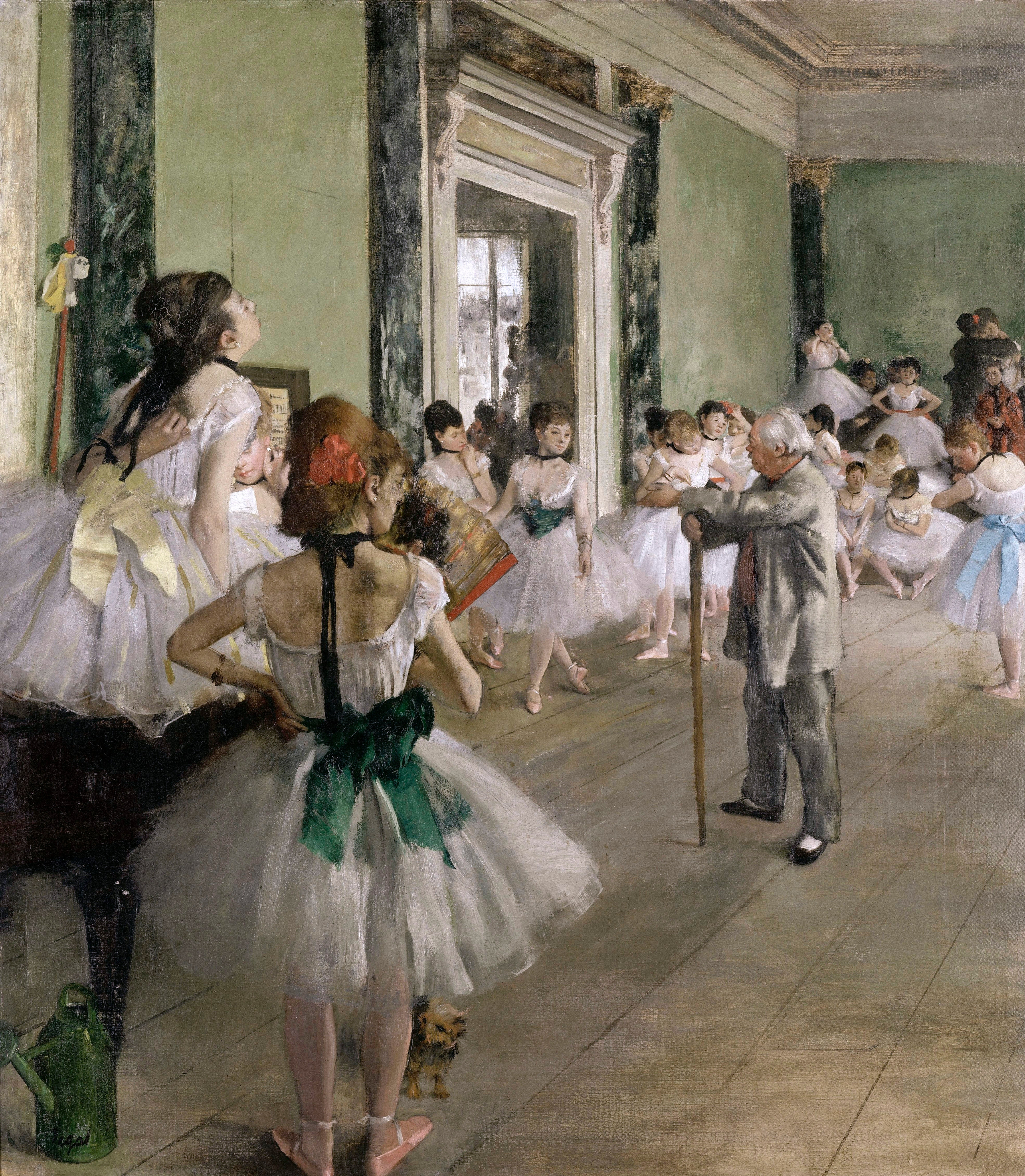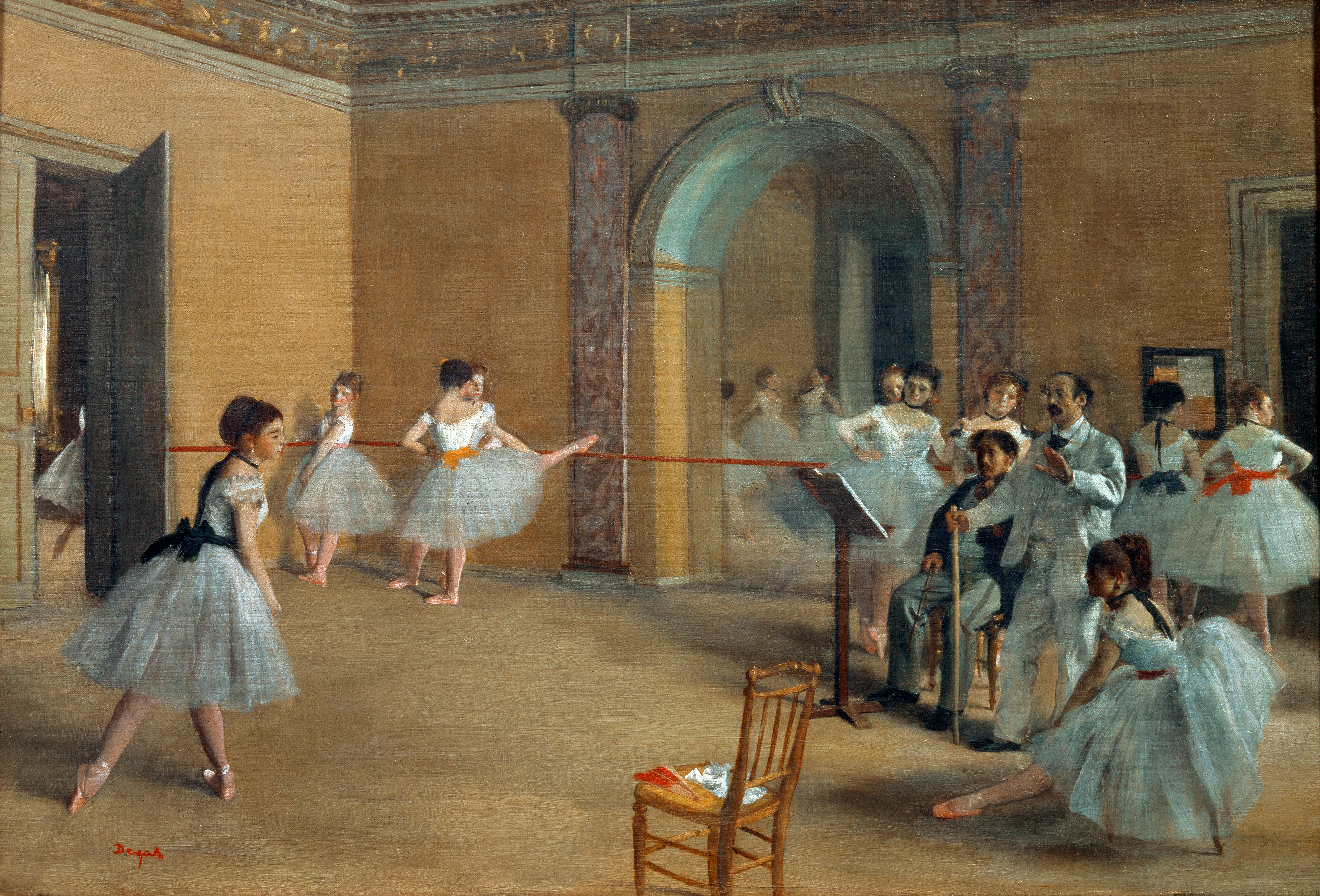|
The Code Of Terpsichore
In 1830, Italian ballet teacher and writer Carlo Blasis (1803-1878) published his second work on the analysis of ballet technique, called ''The Code of Terpsichore''. This work was composed of figures, or illustrations, organized alphabetically, inscribing the ideal forms of poses, steps, and jumps in ballet. In codifying the tradition of ballet training, Blasis valued both the mechanical and aesthetic aspects of ballet.Brandstettter, Gabriele. “The Code of Terpsichore The Dance Theory of Carlo Blasis: Mechanics as the Matrix of Grace*.” ''Topoi'', vol. 24, no. 1, 2005, pp. 67–79., doi:10.1007/s11245-004-4162-x. The geometry of poses and positions were essential to his idea of precision. He also examined the kinetic ideal of static poses in order to master equilibrium. According to his kinetic studies, each movement has a center of gravity and a relation to perpendicular lines in the body. One of the most important concepts to Blasis was how the body must counteract forces t ... [...More Info...] [...Related Items...] OR: [Wikipedia] [Google] [Baidu] |
Carlo Blasis
Carlo Blasis (4 November 1797 – 15 January 1878) was an Italian dancer, choreographer and dance theoretician born in Naples. He is well known for his very rigorous dance classes, sometimes lasting four hours long. He danced in France, Italy, London and Russia. Blasis insisted that his students learn theories and definitions of dance steps. He trained all of Enrico Cecchetti's teachers and it is thought that Blasis's influence in his training is what led Cecchetti to create the Cecchetti method of ballet. Work He published an analysis of the ballet techniques in 1820, in a work named ''Traité élémentaire, théorique, et pratique de l'art de la danse'' ("Elementary, Theoretical, and Practical Treatise on the Art of the Dance"). He is most known for the pose "Attitude" derived from the famous statue Mercury by Giovanni da Bologna. Enrico Cecchetti expanded his method of instruction and theories. Even during his own time, Blasis was not best known for his many choreographies ... [...More Info...] [...Related Items...] OR: [Wikipedia] [Google] [Baidu] |
Ballet
Ballet () is a type of performance dance that originated during the Italian Renaissance in the fifteenth century and later developed into a concert dance form in France and Russia. It has since become a widespread and highly technical form of dance with its own vocabulary. Ballet has been influential globally and has defined the foundational techniques which are used in many other dance genres and cultures. Various schools around the world have incorporated their own cultures. As a result, ballet has evolved in distinct ways. A ''ballet'' as a unified work comprises the choreography and music for a ballet production. Ballets are choreographed and performed by trained ballet dancers. Traditional classical ballets are usually performed with classical music accompaniment and use elaborate costumes and staging, whereas modern ballets are often performed in simple costumes and without elaborate sets or scenery. Etymology Ballet is a French word which had its origin in Ital ... [...More Info...] [...Related Items...] OR: [Wikipedia] [Google] [Baidu] |
Ballet Training
Classical ballet is any of the traditional, formal styles of ballet that exclusively employ classical ballet technique. It is known for its aesthetics and rigorous technique (such as pointe work, turnout of the legs, and high extensions), its flowing, precise movements, and its ethereal qualities. There are stylistic variations related to an area or origin, which are denoted by classifications such as Russian ballet, French ballet, British ballet and Italian ballet. For example, Russian ballet features high extensions and dynamic turns, whereas Italian ballet tends to be more grounded, with a focus on fast, intricate footwork. Many of the stylistic variations are associated with specific training methods that have been named after their originators. Despite these variations, the performance and vocabulary of classical ballet are largely consistent throughout the world. History Ballet originated in the Italian Renaissance courts and was brought to France by Catherine de' Med ... [...More Info...] [...Related Items...] OR: [Wikipedia] [Google] [Baidu] |
Center Of Gravity
In physics, the center of mass of a distribution of mass in space (sometimes referred to as the balance point) is the unique point where the weighted relative position of the distributed mass sums to zero. This is the point to which a force may be applied to cause a linear acceleration without an angular acceleration. Calculations in mechanics are often simplified when formulated with respect to the center of mass. It is a hypothetical point where the entire mass of an object may be assumed to be concentrated to visualise its motion. In other words, the center of mass is the particle equivalent of a given object for application of Newton's laws of motion. In the case of a single rigid body, the center of mass is fixed in relation to the body, and if the body has uniform density, it will be located at the centroid. The center of mass may be located outside the physical body, as is sometimes the case for hollow or open-shaped objects, such as a horseshoe. In the case of a di ... [...More Info...] [...Related Items...] OR: [Wikipedia] [Google] [Baidu] |
Michel Fokine
Michael Fokine, ''Mikhail Mikhaylovich Fokin'', group=lower-alpha ( – 22 August 1942) was a groundbreaking Imperial Russian Choreography (dance), choreographer and dancer. Career Early years Fokine was born in Saint Petersburg to a prosperous merchant and at the age of 9 was accepted into the Saint Petersburg Vaganova Academy of Russian Ballet, Imperial Ballet School. That same year, he made his performing debut in ''The Talisman (ballet), The Talisman'' under the direction of Marius Petipa. In 1898, on his 18th birthday, he debuted on the stage of the Mariinsky Theatre, Imperial Mariinsky Theatre in ''Paquita'', with the Imperial Russian Ballet. In addition to being a talented dancer, Fokine was also passionate about painting and displayed talent in this area as well. He also played musical instruments, including mandolin (played on stage in ensemble led by Ginislao Paris), domra, and balalaika (played in Vasily Andreyev's Great Russian Orchestra). Transition to choreo ... [...More Info...] [...Related Items...] OR: [Wikipedia] [Google] [Baidu] |
Giovanni Lepri
Giovanni may refer to: * Giovanni (name), an Italian male given name and surname * Giovanni (meteorology), a Web interface for users to analyze NASA's gridded data * ''Don Giovanni'', a 1787 opera by Wolfgang Amadeus Mozart, based on the legend of Don Juan * Giovanni (Pokémon), boss of Team Rocket in the fictional world of Pokémon * Giovanni (World of Darkness), a group of vampires in ''Vampire: The Masquerade/World of Darkness'' roleplay and video game * "Giovanni", a song by Band-Maid from the 2021 album ''Unseen World'' * ''Giovanni's Island'', a 2014 Japanese anime drama film * ''Giovanni's Room'', a 1956 novel by James Baldwin * Via Giovanni, places in Rome See also * * *Geovani *Giovanni Battista *San Giovanni (other) San Giovanni, the Italian form of "Saint John", is a name that may refer to dozens of saints. It may also refer to several places (most of them in Italy) and religious buildings: Places France *San-Giovanni-di-Moriani, a municipality of the Hau . ... [...More Info...] [...Related Items...] OR: [Wikipedia] [Google] [Baidu] |
Enrico Cecchetti
Enrico Cecchetti (; 21 June 1850 – 13 November 1928) was an Italian ballet dancer, mime, and founder of the Cecchetti method. The son of two dancers from Civitanova Marche, he was born in the costuming room of the ''Teatro Tordinona'' in Rome. After an illustrious career as a dancer in Europe, he went to dance for the Imperial Ballet in St. Petersburg, Russia, where he further honed his skills. Cecchetti was praised for his agility and strength in his performances, as well as his technical abilities in dance. By 1888, he was widely accepted as the greatest ballet virtuoso in the world. After an esteemed career in Russia, originating such roles as both the Bluebird and Carabosse in Petipa's masterpiece, '' The Sleeping Beauty'', he turned to teaching. Some of his students included other notable dancers of the Imperial Ballet, such as: Anna Pavlova, Léonide Massine, and Vaslav Nijinsky. While in London in 1920, he provided instruction to the American ballerina Ruth Page ... [...More Info...] [...Related Items...] OR: [Wikipedia] [Google] [Baidu] |
Books About Ballet
A book is a medium for recording information in the form of writing or images, typically composed of many page (paper), pages (made of papyrus, parchment, vellum, or paper) bookbinding, bound together and protected by a book cover, cover. The technical term for this physical arrangement is ''codex'' (plural, ''codices''). In the history of hand-held physical supports for extended written compositions or records, the codex replaces its predecessor, the scroll. A single sheet in a codex is a Recto, leaf and each side of a leaf is a page (paper), page. As an intellectual object, a book is prototypically a composition of such great length that it takes a considerable investment of time to compose and still considered as an investment of time to read. In a restricted sense, a book is a self-sufficient section or part of a longer composition, a usage reflecting that, in antiquity, long works had to be written on several scrolls and each scroll had to be identified by the book it co ... [...More Info...] [...Related Items...] OR: [Wikipedia] [Google] [Baidu] |
Italian Books
Italian(s) may refer to: * Anything of, from, or related to the people of Italy over the centuries ** Italians, an ethnic group or simply a citizen of the Italian Republic or Italian Kingdom ** Italian language, a Romance language *** Regional Italian, regional variants of the Italian language ** Languages of Italy, languages and dialects spoken in Italy ** Italian culture, cultural features of Italy ** Italian cuisine, traditional foods ** Folklore of Italy, the folklore and urban legends of Italy ** Mythology of Italy, traditional religion and beliefs Other uses * Italian dressing, a vinaigrette-type salad dressing or marinade * Italian or Italian-A, alternative names for the Ping-Pong virus, an extinct computer virus See also * * * Italia (other) * Italic (other) Italic may refer to: * Anything of or relating to Italy ** Anything of, or relating to, the Italian Peninsula *** Italic peoples, Italic-language speaking people of ancient Italy *** Itali ... [...More Info...] [...Related Items...] OR: [Wikipedia] [Google] [Baidu] |



